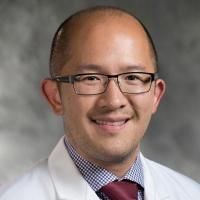A Multicenter Study of the Presentation, Treatment, and Outcomes of Cervical Dural Tears.
Date
2017-04
Journal Title
Journal ISSN
Volume Title
Repository Usage Stats
views
downloads
Citation Stats
Abstract
Study design
Retrospective multicenter case series study.Objective
Because cervical dural tears are rare, most surgeons have limited experience with this complication. A multicenter study was performed to better understand the presentation, treatment, and outcomes following cervical dural tears.Methods
Multiple surgeons from 23 institutions retrospectively identified 21 rare complications that occurred between 2005 and 2011, including unintentional cervical dural tears. Demographic data and surgical history were obtained. Clinical outcomes following surgery were assessed, and any reoperations were recorded. Neck Disability Index (NDI), modified Japanese Orthopaedic Association (mJOA), Nurick classification (NuC), and Short-Form 36 (SF36) scores were recorded at baseline and final follow-up at certain centers. All data were collected, collated, and analyzed by a private research organization.Results
There were 109 cases of cervical dural tears among 18 463 surgeries performed. In 101 cases (93%) there was no clinical sequelae following successful dural tear repair. There were statistical improvements (P < .05) in mJOA and NuC scores, but not NDI or SF36 scores. No specific baseline or operative factors were found to be associated with the occurrence of dural tears. In most cases, no further postoperative treatments of the dural tear were required, while there were 13 patients (12%) that required subsequent treatment of cerebrospinal fluid drainage. Analysis of those requiring further treatments did not identify an optimum treatment strategy for cervical dural tears.Conclusions
In this multicenter study, we report our findings on the largest reported series (n = 109) of cervical dural tears. In a vast majority of cases, no subsequent interventions were required and no clinical sequelae were observed.Type
Department
Description
Provenance
Citation
Permalink
Published Version (Please cite this version)
Publication Info
O'Neill, Kevin R, Michael G Fehlings, Thomas E Mroz, Zachary A Smith, Wellington K Hsu, Adam S Kanter, Michael P Steinmetz, Paul M Arnold, et al. (2017). A Multicenter Study of the Presentation, Treatment, and Outcomes of Cervical Dural Tears. Global spine journal, 7(1 Suppl). pp. 58S–63S. 10.1177/2192568216688186 Retrieved from https://hdl.handle.net/10161/28391.
This is constructed from limited available data and may be imprecise. To cite this article, please review & use the official citation provided by the journal.
Collections
Scholars@Duke

Christopher Ignatius Shaffrey
I have more than 25 years of experience treating patients of all ages with spinal disorders. I have had an interest in the management of spinal disorders since starting my medical education. I performed residencies in both orthopaedic surgery and neurosurgery to gain a comprehensive understanding of the entire range of spinal disorders. My goal has been to find innovative ways to manage the range of spinal conditions, straightforward to complex. I have a focus on managing patients with complex spinal disorders. My patient evaluation and management philosophy is to provide engaged, compassionate care that focuses on providing the simplest and least aggressive treatment option for a particular condition. In many cases, non-operative treatment options exist to improve a patient’s symptoms. I have been actively engaged in clinical research to find the best ways to manage spinal disorders in order to achieve better results with fewer complications.

Khoi Duc Than
I chose to pursue neurosurgery as a career because of my fascination with the human nervous system. In medical school, I developed a keen interest in the diseases that afflict the brain and spine and gravitated towards the only field where I could help treat these diseases with my own hands. I focus on disorders of the spine where my first goal is to help patients avoid surgery if at all possible. If surgery is needed, I treat patients using the most advanced minimally invasive techniques available in order to minimize pain, blood loss, and hospital stay, while maximizing recovery, neurologic function, and quality of life. In my free time, I enjoy spending time with my family and friends. I am an avid sports fan and love to eat. I try to stay physically fit by going to the gym and playing ice hockey.
Unless otherwise indicated, scholarly articles published by Duke faculty members are made available here with a CC-BY-NC (Creative Commons Attribution Non-Commercial) license, as enabled by the Duke Open Access Policy. If you wish to use the materials in ways not already permitted under CC-BY-NC, please consult the copyright owner. Other materials are made available here through the author’s grant of a non-exclusive license to make their work openly accessible.
